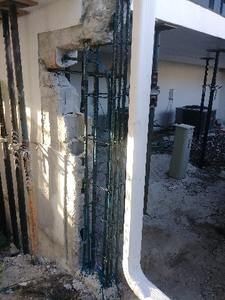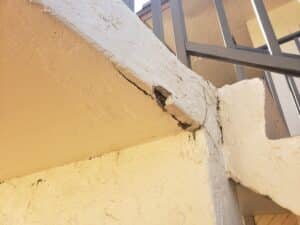Maintaining concrete structures is crucial for ensuring their longevity and functionality. Regular inspections, timely repairs, and preventive maintenance practices play vital roles in keeping concrete in excellent condition. However, concrete is often subjected to harsh conditions, including weather changes, chemical exposure, and physical wear and tear, which can compromise its integrity over time.
Inspections are the first step in effective maintenance, allowing us to identify issues early before they escalate. Detecting cracks, spalling, and other common problems early can save time and money on more extensive repairs down the line. Likewise, understanding how to properly address these issues when they arise ensures the concrete remains strong and safe for its intended use.
Understanding the Importance of Regular Inspections
Regular inspections are crucial for maintaining the integrity and safety of concrete structures. Over time, concrete can develop a variety of issues like cracks, spalling, and surface wear. By conducting regular inspections, we can catch these problems early before they worsen and require more extensive and expensive repairs. Inspections help us ensure that the concrete remains strong and continues to perform its intended function.
Frequent checks allow us to monitor any changes in the condition of the concrete. This helps in identifying patterns or recurring problems that might indicate underlying issues such as improper drainage or structural faults. Regular inspections also provide documentation of the concrete’s condition over time, which can be invaluable for planning maintenance and budgets. Ultimately, these inspections are a proactive measure that helps in promoting the longevity and durability of your structures.
Identifying and Repairing Common Concrete Issues
Identifying common concrete problems promptly is essential for effective repair and prevention. One of the most common issues is cracking. Cracks can occur due to various reasons such as temperature fluctuations, excessive loads, or shrinkage during the curing process. When we spot a crack, it’s important to assess its size and depth to determine the appropriate repair method.
Spalling is another frequent issue where the concrete surface flakes or peels away. This usually happens due to freeze-thaw cycles or the use of de-icing salts. To repair spalling, we typically remove the damaged area, clean the underlying surface, and then apply a suitable patching material. Additionally, efflorescence, a white powdery residue on the surface, can indicate moisture problems. Addressing the source of moisture and cleaning the surface can resolve this issue. By identifying and repairing these common problems quickly, we can prevent more extensive damage and prolong the life of the concrete.
Best Practices for Preventive Maintenance
Preventive maintenance is key to ensuring the longevity and durability of concrete structures. Regular inspections are the first step in preventive maintenance. We recommend inspecting concrete surfaces at least twice a year to identify any signs of wear and tear. Look for cracks, spalling, or discoloration, which may indicate underlying issues that need to be addressed promptly.
Cleaning the concrete surface regularly is also an essential part of preventive maintenance. Dirt, debris, and chemical residues can damage the surface over time. Using a pressure washer or a mild cleaning solution can help keep the surface free from harmful substances. Additionally, applying a concrete sealant every few years can provide an extra layer of protection, preventing moisture and contaminants from penetrating the surface. By following these best practices, we can extend the life of our concrete structures and maintain their integrity.
Using Protective Coatings to Extend Concrete Life
Applying protective coatings is an effective way to extend the life of concrete. These coatings act as a barrier against moisture, chemicals, and environmental elements. There are various types of protective coatings available, including epoxy, polyurethane, and acrylic. Each type offers different levels of protection and durability, so choosing the right one for your specific needs is crucial.
Epoxy coatings are known for their strong adhesion and resistance to abrasions, making them ideal for high-traffic areas. Polyurethane coatings offer excellent UV resistance and flexibility, which is beneficial for exterior surfaces exposed to sunlight. Acrylic coatings provide a breathable barrier, allowing moisture to escape while protecting the concrete from surface damage. Applying these coatings correctly involves proper surface preparation, application techniques, and drying times to ensure maximum effectiveness. By using protective coatings, we can significantly enhance the durability of concrete surfaces, making them last longer and reducing the need for frequent repairs.
Conclusion
Regular maintenance and inspections are essential in preserving the quality and longevity of concrete surfaces. By understanding the importance of preventive measures and utilizing protective coatings, we can tackle common concrete issues before they become major problems. At McLeod’s Contracting Solutions, we are committed to providing top-notch services to ensure your concrete structures remain durable and aesthetically pleasing.
If you need assistance with concrete maintenance, repairs, or any other construction services, contact McLeod’s Contracting Solutions today. Let our team of experts help you maintain the integrity of your property with effective and reliable concrete sealing services tailored to your needs.







